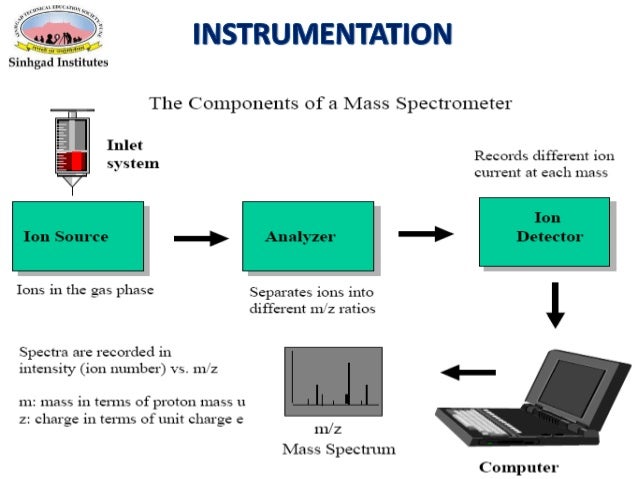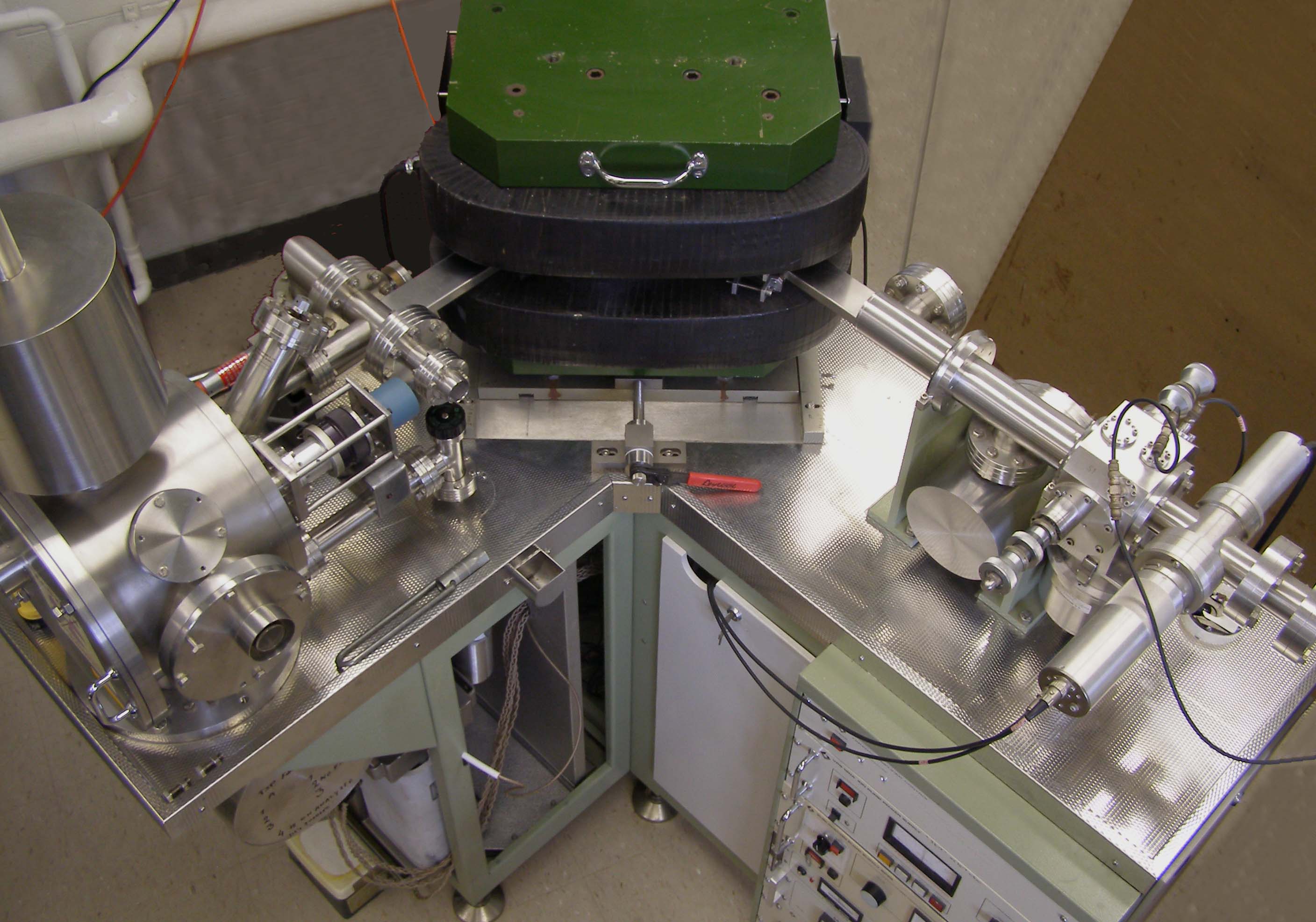This article discusses the instrumentation of mass spectrometer
The general operation of a mass spectrometer is:
1. create gas-phase ions.
2. separate the ions in space or time based on their mass-to-charge ratio.
3. measure the number of ions of each mass-to-charge ratio.
Component of the mass spectrometer

Ion source
For producing gaseous ions from the substance being studied. The role of the ion source is to create gas-phase ions
1) Analyte atoms and molecules are transferred into the gas phase
2) Ionization
There are many sources that are used in a mass spectrometer.
- The mass spectrometer is an instrument that measures the mass-to-charge ratio (m/z) values and their relative abundances of ions
- Molecular mass: Exact mass of an ion or molecule calculated using the mass of the most abundant isotope of each element
- Molar mass: Mass of one mole (6x10 23 atoms or molecules) of a molecule/compound (i.e. isotope-averaged atomic mass for the constituent elements)
- Mass spectrometers use the difference in the mass-to-charge ratio (m/z) of ionized atoms or molecules to separate them. Therefore, mass spectroscopy allows the quantitation of atoms or molecules and provides structural information by the identification of distinctive fragmentation patterns.
The general operation of a mass spectrometer is:
1. create gas-phase ions.
2. separate the ions in space or time based on their mass-to-charge ratio.
3. measure the number of ions of each mass-to-charge ratio.
Component of the mass spectrometer
- Sample inlet
- Ion source
- Analyzer
- Detector
- Data processer and collector
Sample inlet
These processes are used for sample introduction
- HPLC
- GC
- Syringe
- Plate
- Capillary

Ion source
For producing gaseous ions from the substance being studied. The role of the ion source is to create gas-phase ions
1) Analyte atoms and molecules are transferred into the gas phase
2) Ionization
There are many sources that are used in a mass spectrometer.
- Chemical Ionisation (CI) uses ion-molecule reactions in the gas phase to produce ions from sample molecules.
- Atmospheric Pressure CI (APCI)
- Electron Impact (EI) beam of electron produce positively charged ions.
- Electrospray Ionization (ESI)
- Fast Atom Bombardment (FAB)
- Field Desorption/Field Ionisation (FD/FI)
- Matrix-Assisted Laser Desorption Ionization (MALDI)
- Thermospray Ionisation (TI)
- Spray Ionization (APCI, APPI, ESI)
- Desorption Ionization (FAB, MALDI, SALDI)
- Gas discharge ion sources (e.g. Inductively Couple Plasma)
- Ambient Ionization (DESI, LAESI)
Mass analyzer
A mass analyzer is a device that can separate atoms and molecules according to
their mass.
For resolving the ions into their characteristics mass components according to their mass-to-charge ratio.
There are the following types of mass analyzers used in a mass spectrometer
- Quadrupoles
- Time-of-Flight (TOF)
- Magnetic sectors Fourier transform
- quadrupole ion traps
- Orbitrap
- Ion Cyclotron Resonance.
- Electric Sector/Double Focusing (Tendon)
- Single focusing magnetic sector
- Multipole (12 rods)
- FLICKR
The five main characteristics for measuring the performance of a mass analyzer
are
1) the mass range limit or dynamic range
2) the analysis speed [u (m)S-1
]
3) the transmission = No. of ion reaching the ions/No. of ions entering mass
analyzer
4) the mass accuracy
5) the resolution
Detector
It is used for detecting the ions and recording the relative abundance of each of the resolved ionic species. The role of the detectors is to convert the energy of the incoming ions
into a current signal that is registered by the electronic devices and
transferred to the acquisition system of MS.
Following types of detector are used in the mass spectrometer
- Electron multiplier
- Photoplay
- Faraday up electron multipliers (MCP)
- Solid-State
- Image current (Orbitrap and FT ICR)
Data collector and processor
 |
| MS |
 |
| MS |







0 Comments
Thanks for visiting blog. if you have any query please let me know.